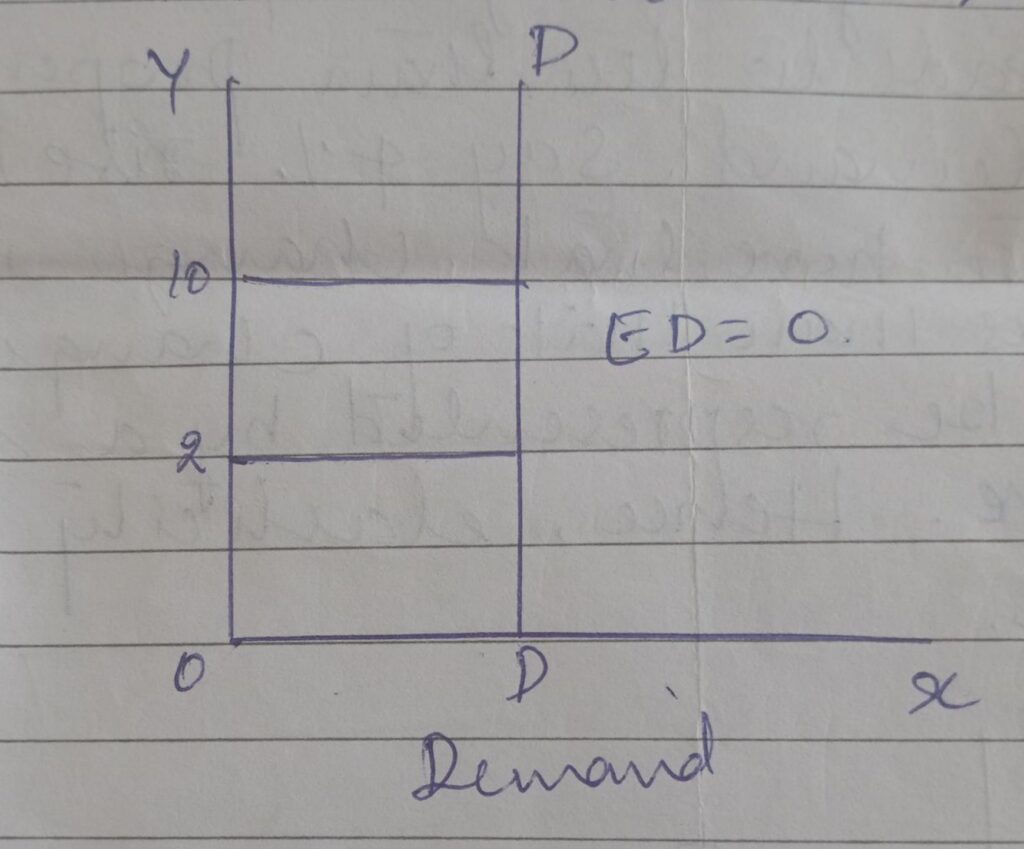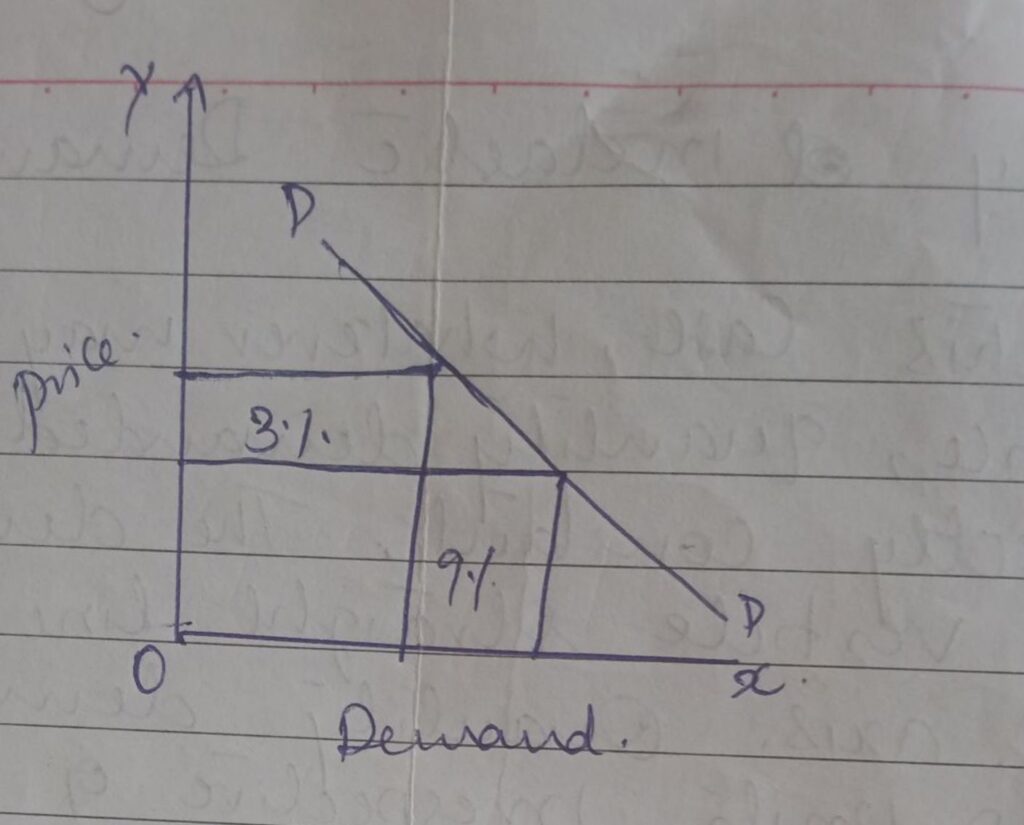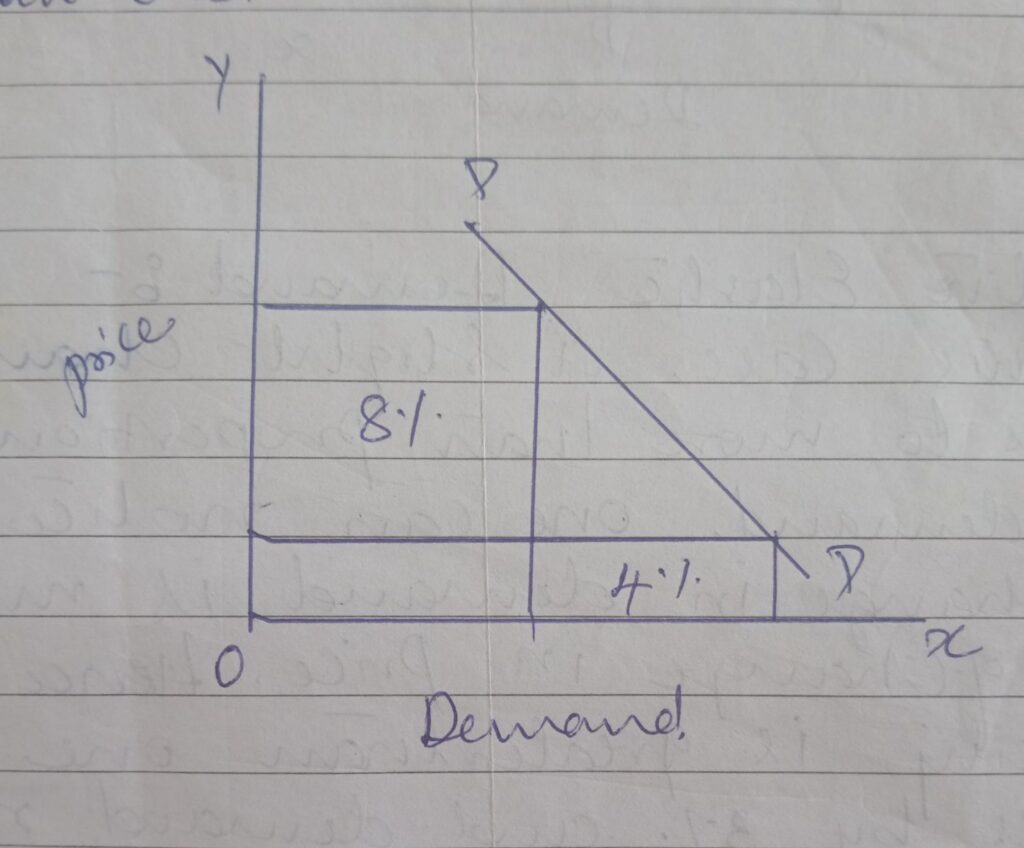Meaning:
Elasticity of Demand refers to the responsiveness of the quantity demanded of a good or service to changes in factors that influence demand, such as price, income, or the prices of related goods. It helps analyze how sensitive consumers are to changes in these variables.
Price elasticity of demand:
Price Elasticity of Demand (PED) measures how the quantity demanded of a good responds to a change in its price. It quantifies the sensitivity of consumers to price changes and is a key concept in economics.
Price elasticity of demand it is one of the important concepts of elasticity which is used to describe the effect of change in price on quantity demanded. In the words of professor stonier and Hague, price elasticity of demand is a technical term used by economist to describe the degree of responsiveness off the demand for a good do you change in its price.
PED= percentage change in quantity demanded divided by percentage change in price
It implies that at the present level with every change in price there will be a change in demand inversely. There are 5 degrees of price elasticity of demand. They are
Degrees of price elasticity of demand:
- Perfect elastic demand. There is a convention in some economic textbooks to give the numerical value of elasticity without the sign. This is known as the absolute value or magnitude of elasticity which only indicates the magnitude of responsiveness of one variable do a change in another and note the direction of these responsiveness.
In perfect elastic demand, a very small change in price leads to an infinite change in demand. The demand curve is a horizontal curve and parallel to OX access. The numerical coefficient off perfectly elastic demand is infinite that is ED= Infinite

2. Perfectly inelastic demand: In perfectly inelasticity case, whatever change may be, the change in price, quantity demanded will remain perfectly constant. The demand curve is a vertical straight line and parallel to oy axis, quantity demanded could be 10 units, irrespective of price changes from rupees Rs.10 to Rs.20. Hence perfectly inelastic demand is zero. ED = 0.

3. Relative elastic demand: In this case, a little change in price makes to more than proportionate change in demand. We can notice here that a change in demand is more than the change in price . Hence the elasticity is greater than one. Example price falls by 3% and demand rises by 9% hence the demand is greater than one.

4. Relative inelastic demand: In this case a large change in price say about 8% fall price, leads to less than proportionate change in demand say 4% rise in demand. We can notice here that change in demand is less than the change in price. This can be represented the steeper demand curve. Hence elasticity is less than one.

5. Unitary elastic demand: In unitary elasticity case the proportionate change in price leads to equal proportionate change in demand. For example 5% fall in price leads to exactly 5% increase in demand hence elasticity is equal to each other.

also read: explain the degrees of elasticity of Supply.